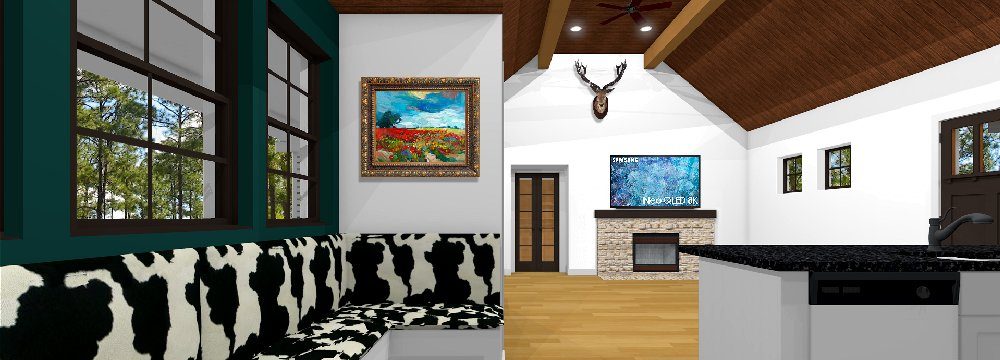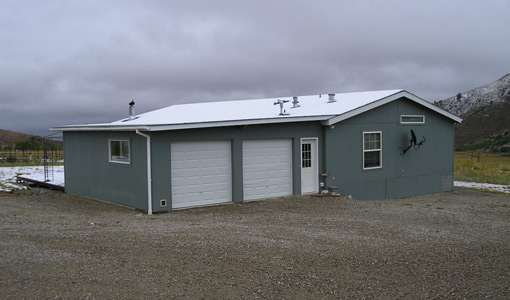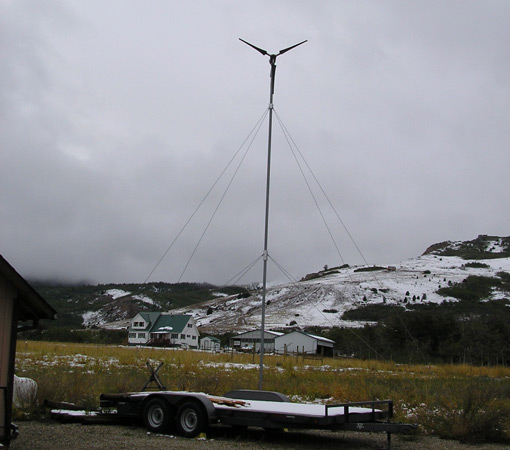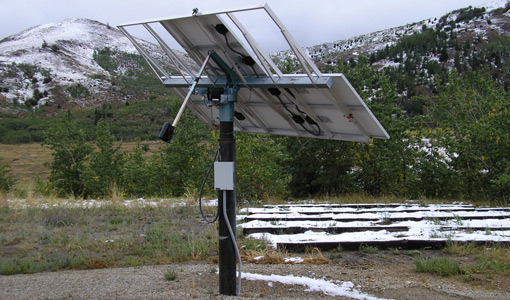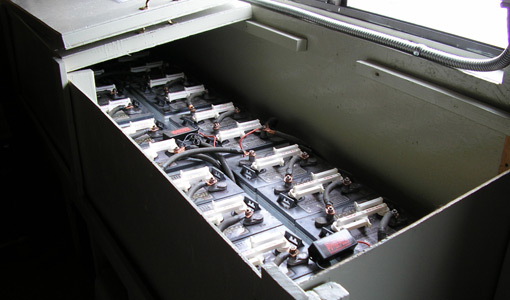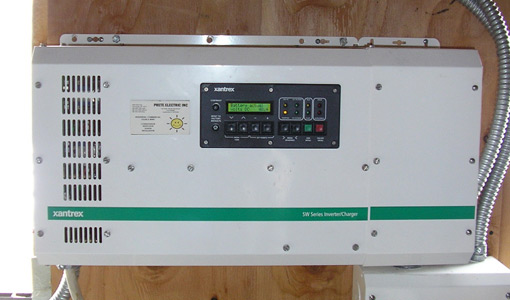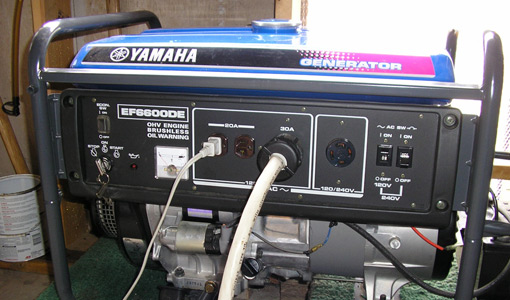Our off the grid house near Anaconda, Montana Taking the Alternative Energy Plunge. By: Bob Ritzman
Taking the Alternative Energy Plunge
When my wife and I moved to Montana last year, we found a comfortable home on several acres with a view of the mountains. There was only one hitch – the house was off the grid. In fact, everyone in the subdivision generated their own power, including the bed and breakfast nearby.
That doesn’t mean it was primitive. The house had solar panels, a wind turbine, a battery bank and inverter, a generator, and a full range of appliances including washer and dryer, refrigerator, stove, satellite TV, propane furnace, and even a dishwasher. Since I had operated a co-generation power plant before coming to Montana, I wasn’t too concerned about generating my own electric power, so we bought the house.
Life Off the Grid
The previous owner showed me the critical facilities and told me how to operate them. When we moved in we put CFLs (compact fluorescent lights) in every light socket, programmed the thermostat to automatically lower the temperature at night, and made sure to turn off the lights when we left a room. We thought we had everything under control.
On our third night in the house, we went to bed as usual to the faint sound of wind outside, a sound we were already beginning to enjoy because it generated most of our power. In the middle of the night, I was awakened by the sound of – nothing. No hum of the refrigerator, no furnace fan, and no wind. The tiny power light on the carbon monoxide detector was out, as was the digital display on the clock radio. We had no power.
Alternative Energy Cost
Since then, I’ve learned the second lesson of renewable energy: while the energy may be free, it still costs more than electricity from a utility company. This may not be obvious, so let me explain. The following are the approximate prices for the equipment we have now, materials only – installation is extra:
If you assume that we receive eight hours of sun and eight hours of wind per day (a generous assumption), we would produce 487 kW-hours of electric energy per month from renewable sources. This is almost half the 920 kW-hours per month that was used by the average American home in 2006.
Assuming the equipment has a 20-year lifespan, it will produce 116,880 kW-hours of energy during that time, and my prorated cost for the equipment will be $0.23 per kW-hour. That’s more than twice the average cost of the same amount of energy from the local utility company.
Backup Generator
On the days when there’s not enough renewable energy, we recharge the batteries using a gasoline generator, which produces approximately 3.5 kW-hours of electric power for each gallon of fuel burned. This translates to an efficiency of approximately 10%, with a fuel cost of about $1.00 per kW-hour given the current price for gasoline in 2008. Compare this to a coal-fired power plant that has an energy efficiency near 40%.
That means that the carbon footprint of my generator is more than three times as large as a coal-fired power plant for the same amount of electric energy produced. If my generator burned propane, its carbon footprint would be slightly smaller because the proportion of carbon in the fuel is smaller. If it burned diesel, the footprint would probably be smaller still, because the efficiency of a diesel generator can approach that of a utility power plant.
Lessons Learned
In summary, this is what I have learned about renewable energy by living off the grid:
- You can’t count on it when you need it. You need a battery bank, and you should have a back up generator available, too.
- It’s expensive. While the energy is free, the equipment is not, making the cost of power higher than utility prices.
- When it fails, the carbon footprint of non-renewable backup generation is larger than that of a utility company.This doesn’t mean I’m against renewable energy, just that given our current technology, living off the grid is not as simple and cost efficient as many people may think.
Additional Information
Source: Living Off the Grid: How to Generate Your Own Electricity | Today’s Homeowner
